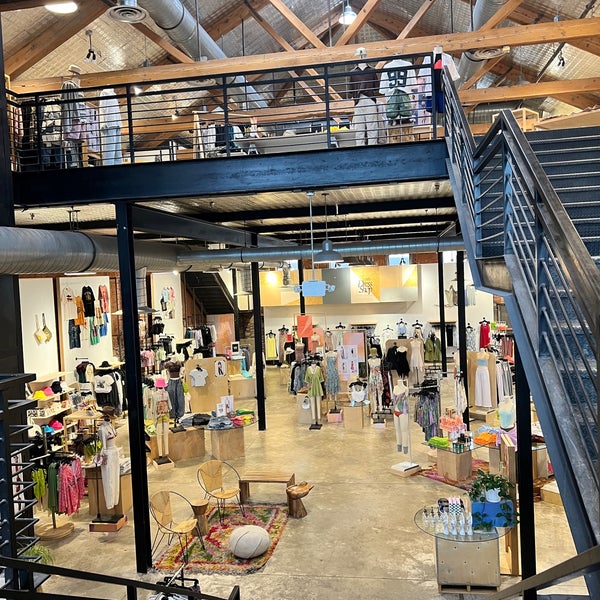Introduction
The Industrialism Aesthetic is one primarily characterized by the use of unfinished materials, exposed structures, neutral color palettes, openness, functional-minimalism, and urban decay. A good example would be repurposed factory or warehouse spaces; see the Boulder Urban Outfitters store.


History
The industrialism aesthetic has seen two primary occurrences outside of what could be claimed as its beginnings during the industrial revolution. However, during this time it began more out of utility than any sort of aesthetic design considerations. The first uses of industrialism as an aesthetic was during the 1960s, when old factories and warehouse spaces began to be repurposed for other applications. This frequently took the form of housing. This aesthetic gained popularity due to its similarity in some aspects to minimalist and modernist aesthetics, which is clearly visible in its geometric, purposeful, and open characteristics. This, in combination with people’s desire to see the ‘raw’ structures and their perceived inherent beauty made the industrialist aesthetic gain popularity.

While this aesthetic saw somewhat of a dip in popularity, there has been a resurgence in its popularity in recent times. In the work world, it has become very common for these spaces to be repurposed as an aesthetic work space, frequently for tech companies. This both satisfies practicality and provides a pleasant visual aesthetic. Additionally, it has become a popular aesthetic for nicer, urban social spaces, such as restaurants and bars.

Influence
A primary influence of this aesthetic has been what some call the coming of the ‘silicon age’, and its effects on infrastructure. As more and more of the population has moved away from industrial jobs, especially in the United States, the spaces that previously housed these processes have become vacant. This relationship between old industry and new has influenced the location, and have made the two intertwined in many ways. As the movement began out of practicality, and has largely been an architectural business decision, it is challenging to accredit any single organization or person with this aesthetic design movements beginning.
It is interesting to note that as the aesthetic transformed from a economically motivated housing decision into a desirable aesthetical choice, that it became an action instead of an option. As time has progressed, new buildings have been designed with this same aesthetic in mind, instead of simply being purchased and occupied in such a state.
For example, the ITLL (Integrated Teaching and Learning Laboratory) at CU Boulder is an example of industrial design aesthetic. Around the Integrated Teaching and Learning Laboratory, students and visitors can find exposed and unfinished structural members, piping, wires, cables, and more. This is shown well in the picture below.

This design aesthetic has also permeated to other areas of design outside of architectural, visible in many different sectors such as furniture, electronics, shoes, tools, and more. While industrial furniture is easy enough to imagine, somethig like electronics may not be. Multiple companies have embraced this aesthetic, such as Asus, Nothing, and even Nintendo, like the image of a clear gameboy shown below.

One could also argue that certain clothes, like the off white brand converse, could be considered industrial design aesthetic in personal apparel. Notably, this style was wildly popular and valuable in recent years. This is shown in the below image.



2 Comments. Leave new
Lovely post. Thank you for spelling out how industrialism came to be in modern American architecture; I had never known why it became popular in my lifetime, but now it makes sense, given that we are moving to a more service-based economy. There are some spots in the ITLL that really show off its internal infrastructure (to an ‘unnecessary’ degree; it is clearly for education). I think pictures of those places would pair well with this post.
Lavender, thanks for your thoughtful comment! While I did include a picture of the ITLL, I agree that there are some key areas that have some fantastic examples of exposed infrastructure that could really compliment this post. Thanks!